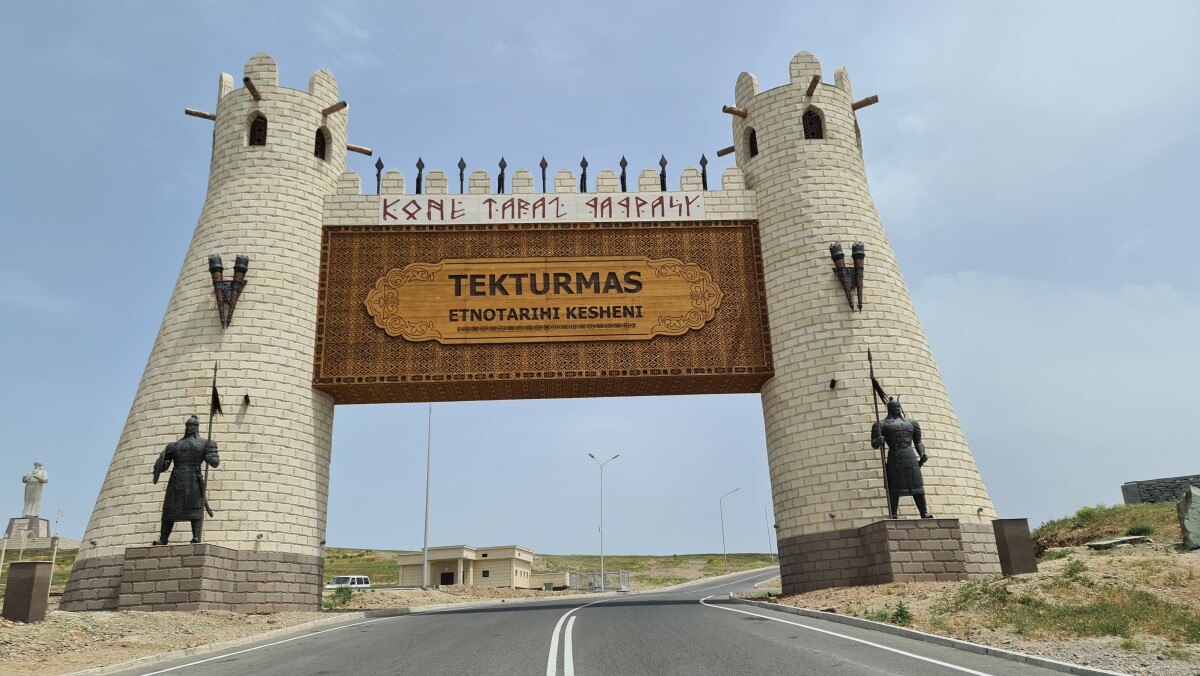
In Zhambyl region, the reconstruction works of the Tekturmas complex continue to preserve the historical heritage of culture and attract tourists to the region. In 2019, in connection with the anniversary of the Zhambyl region, a grandiose construction was launched here. So, the vicinity of Taraz was decorated with a 13-meter figure of Aulie-ata Karakhan and a 10-meter Lauha (scepter). Also, the 14 monuments appeared here in the form of khan tents with the names of the rulers. Qazaqstan Tarihy portal will introduce readers with the people, for whom the monuments have been erected after so many centuries.
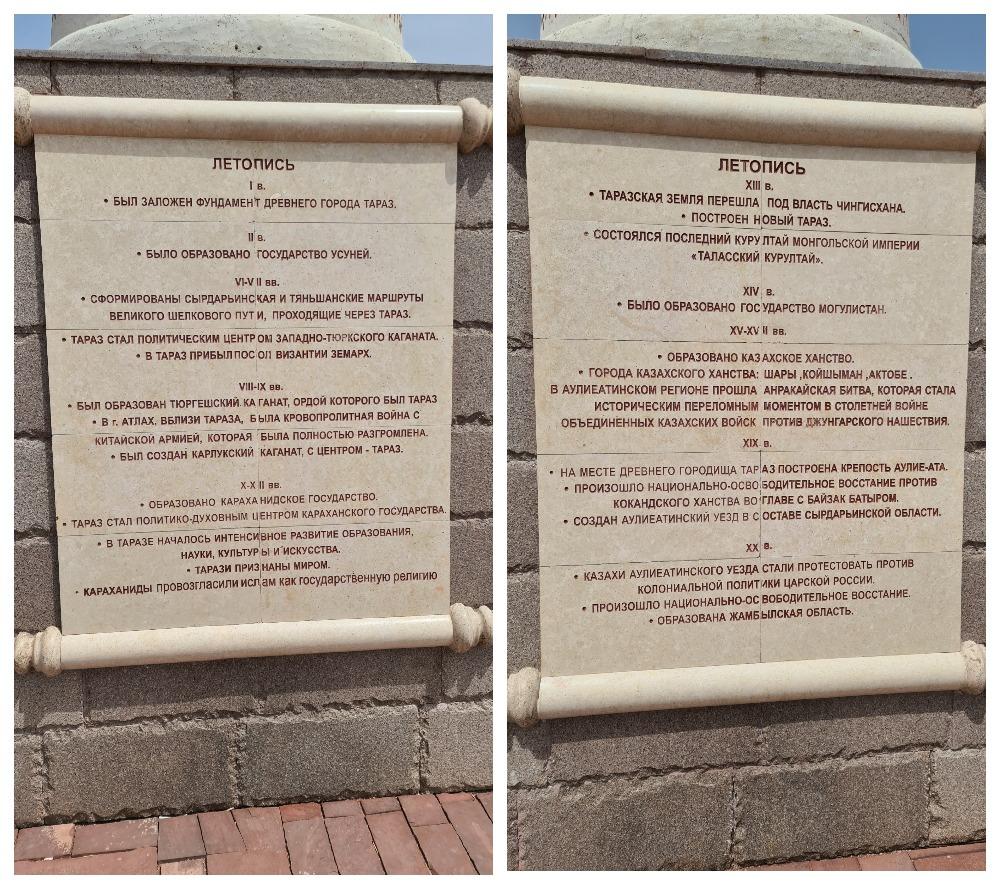
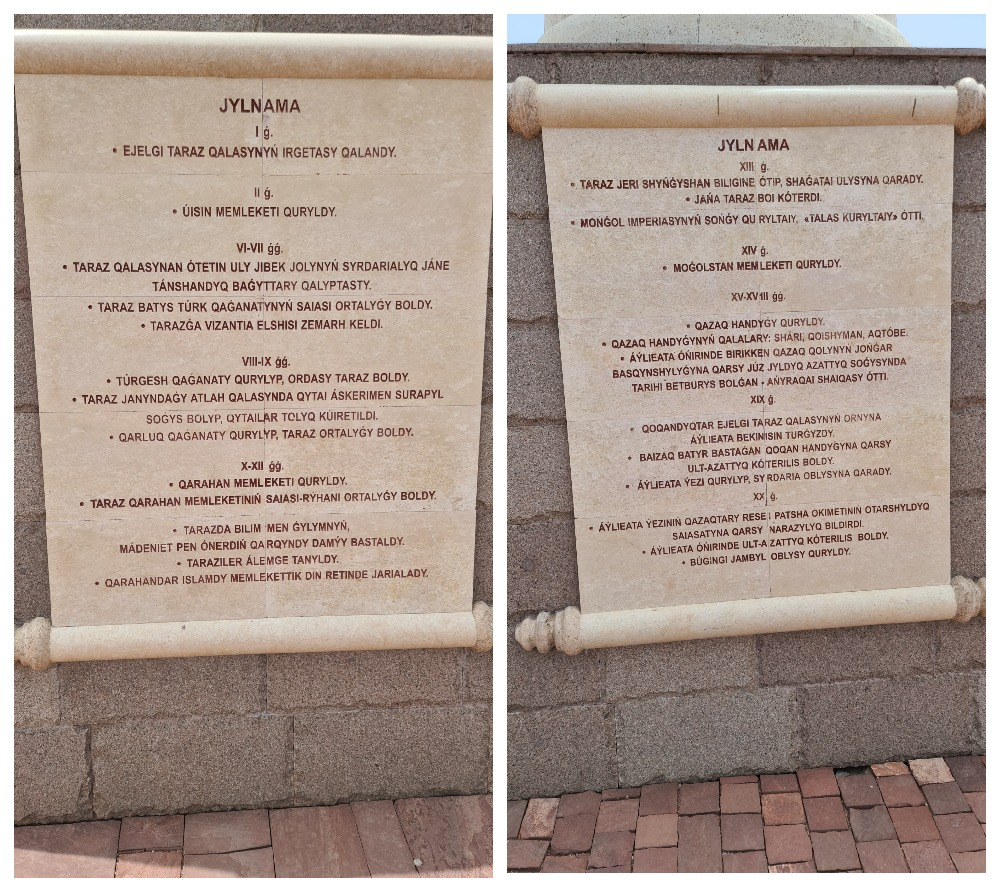
Alyp Er Tona (VIII-VII centuries B.C.E.) is a Turkic leader, known in the memory of descendants for his resourcefulness, strength and education. In the outstanding monument of Persian literature “Shahnameh” (XI century) Alyp Er Ton is depicted as the ruler of Turan, the father of the sons of Baryskhan, Karakhan, Shide and Alak. Some brief information about his life can be gleaned fr om the dastan “Alyp Er Ton”. It tells about the Persian warriors who lived on the territory of modern Iran constantly raided the neighboring Turkic lands of Turan: they took women, drove away livestock, robbed the people and trampled the crops of farmers. Er Ton, who managed to gather the nukers and move forward against the enemy, lived during these years. In the end, the army of Er Ton emerged the victorious fr om this confrontation, to whose name the word “Alyp” was added shortly after the victory.
After the death of Alyp Er Ton, the people mourned a commemorative song for him, which, passing fr om father to son, reached Mahmud Kashgar in the 11th century. A latter wrote it down and immortalized it in the book “Diuani lugat at-Turk”. This commemorative song is considered one of the first monuments of ancient Turkic literature and folklore.
Shu kagan (IV-III centuries B.C.E.) – the ruler during the Saka era. A historical information about Shu Kagan has come down to our days fr om the work of Mahmud Kashgari “Diuani lugat at-Türk”. One of them is closely related to the history of the conquest campaigns of Alexander the Great.
One of the legends, described in the above-mentioned work, tells about the arrival of the Macedonian to the shores of the Chu. It says that when Alexander passed through Samarkand, a young kagan named Shu ruled over the Turks. Previously, Shu Kagan sat in Balasagun, but with the help of a large army he managed to seize the new lands and erect the city of Shu. Following the approach of Alexander's troops, a batyr came to the kagan, announcing an imminent approach of Alexander the Great. Then, Shu Kagan sent a reconnaissance detachment of forty tarkhans to the coast of the Khojand River, secretly fr om his advisers.
Meanwhile, the Macedonian crossed the river, that was reported to him by his scouts soon. On the same night, the kagan migrated to the east along with the army and those who had time to gather. The historians explain a quick migration of the Shu Kagan`s people by the fact that a free nomadic people could perish if they remained locked up within the walls. Thus, going to the steppe, Shu Kagan made the right decision where nothing would hinder their movement. Later, Alexander's troops finally caught up with the army of Shu Kagan, a battle that received the name “Altun Kan” took place, at the end of which Shu Kagan and Alexander the Great concluded an armistice.
Istemi (VI century) – Kagan of the Western Turkic Kaganate. In the ancient chronicles, Istemi was called one of the founders of the Turkic tribal union. In the ancient cuneiforms, Tonyukuk Istemi was considered an intelligent, courageous and well-versed man in military affairs, due to which he has managed to remain in power for many years. It is known that he led an army of 10 tumens, and was a batyr. In 552-553, he managed to conquer the Hu people, as well as the tribes in the northern Altai. In 554-555, he went to the war against the Jujans, drove them out of the Aral Sea and in a short time, conquered lands from China to the Amu Darya and from Tashkent to the Syr Darya. His army reached the banks of the Volga in 558. Later, in his campaigns deep into Central Asia, he met desperate resistance from the Hephthalites, that is why he temporarily stopped the campaigns of conquest. A confrontation with the Hephthalites forced Istemi to seek a military alliance with the Iranian Shah Khosrov I Anushirvan, as a result of which the state of Hephthalites was defeated in 563-567. For the unification of ten large tribes of the Western Türkic Kaganate, Istemi received the name “On ok budun of Kagany”, but was not elected officially as Kagan.
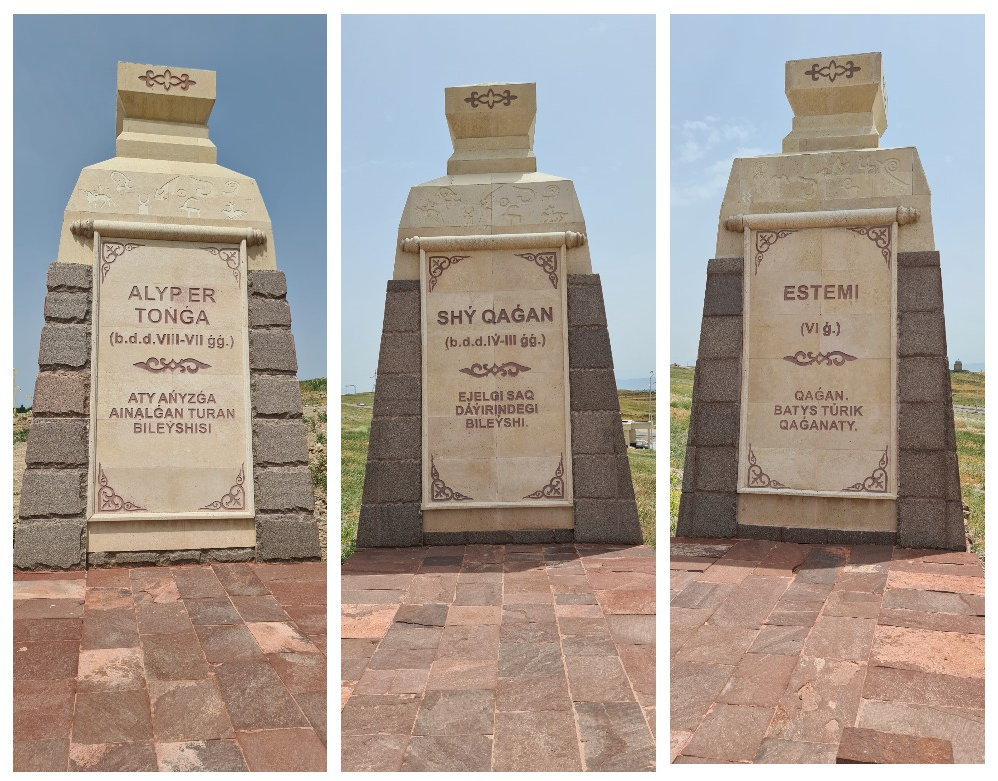
Shozhe (1st century B.C.E.) – kagan, founder of the ancient city of Taraz. Shozhe's fate was tragic, and the period of his reign in the historical chronicle is associated with the fall of the Huns state. In the book of the Russian orientalist Tursyn Zhurtbay “Akinak”, it is said that there was no fault of Shozhe in the fall of the Xiongnu kaganate. According to him, he fought with the enemy bravely.
This struggle with China had stretched out for five centuries, and as soon as the “Feet of the warriors plowing the virgin lands” touched the new land for them, the steppe kulans could no longer set the foot there. This secret policy was understood too late. A realization came when all the small peoples and states fell under the influence of the Chinese, and their troops began to gather under the banner of the Chinese commanders. The difficulties and troubles led to the fact that the Khaganate of the Huns was divided into two parts. The right wing of the Huns, located near the Great Wall of China, came under the influence of the House of Han. Some cattle were stolen, the famine and jute had started at that time. At first, the left wing of the Huns has been submitted to the demands of China, then, they went to an agreement with them, but began to move away from them and decided to fight for the independence gradually. The right wing, in which Kokan was the kagan, has been submitted to the Chinese people and admitted them.
An internecine struggle had begun between the heirs of the Huns. The younger brother of Shozhe and Kokan Tuazhat decided to take advantage of the contradictions between the two Tanirkuts and seize the throne. Tuazhat did disagree with the fact that Shozhe decided to leave with all his soldiers and people to Altai and the Sayan Mountains, and opposed this, he gathered the soldiers and blocked the path.
Tuazhat called himself as Ilim, fought with Shozhe and died in battle. Shozhe added fifty thousand warriors of Ilim to his men. Not wanting to fight the other brother, Shozhe went further to the north part. Seeing that he would not even bring peace to the Huns' people with this, Shozhe raised the nomad and approached the Uysuns again. The younger Kunbi Uysun Ozhet blocked Shozhe's road, and then Shozhe smashed his army to smithereens. So, he joined the Uysuns. Shozhe resettled part of his people to the liberated lands of the Uysuns, and ordered them to live here. Having united the peoples, Shozhe concluded agreements on unity and brotherhood, as well as the agreements on the upcoming nomadic camps.
But all this time, Shozhe was threatened by his brother from the flank. Along with this, the khan kangly and Shozhe gave one girl to the other, having concluded a friendship agreement, then they became the matchmakers and friends. Submitting to the loud glory of Shozhe, the Kangly Khan began to show him all the great honors. So that, other neighboring peoples would obey him.
In 44 B.C.E., the Kangly people and the northern Huns formed an alliance, which the Han did not like. Fearing that the state of the Huns would rise, China began to send the ambassadors and intelligence officers to Western countries and collect information. Shozhe, having united with the Kangly, began the construction of a fortress in the area of the Talas River. Every day 1,500 people worked on it, they had built the fortress for two years. Ambassadors were sent to the Avars and to Fergana, who forced these peoples to pay the taxes and tribute.
There was nowhere to retreat. Shozhe decided that a fortress should be built on the banks of the Talas River and to meet an enemy here. Shozhe's adversary, the skillful Chinese commander Chin Tang, fulfilling his military duty, planned a surprise attack. He collected information about every step of Shozhe daily.
The Chinese army was divided into six bulks, wh ere ten thousand men are in each bulk. The first three bulks went along the southern road, crossed the Pamir and moved towards Fergana. The other three bulks left the Aksu escape. They went along the northern road to the city of Shygu, came to the Uisuns, passed the border of the Kangly's possessions and reached the western shore of Issyk-Kul lake.
Shozhe put on his iron armor and went out to the tower of the fortress. His eldest wife and princesses, more than ten people, took bows in their hands and began to shoot at the enemy soldiers climbing the walls. At that moment, the arrow hit Tanirkutu`s nose. And, all his women were killed and wounded by the arrows. Tanirkut gave orders to his soldiers in order to fight inside the fortress. Chyn Tang's soldiers were able to destroy the earthen embankment under the walls of the fortress.
Losing the battle Shozhe said to those who remained: “The Huns clan should not disappear from the face of the earth. Don't become slaves and concubines. After a while, gather again, come to your senses, and rebuild the country and people. Then our dream will also come true. Before the God of Heaven Tengri, our souls will be grateful to you!”
The countless armies of the Han kingdom from four sides entered the central part of the city, and approached the citadel. There was Shozhe himself with a hundred guards, wives and children, who hid in this small fortress. Shozhe was struck by an arrow. Du-shun, the deputy commander of the Chinese army, cut off his head.
Tan-Jabgu (VII century A.D.) – the kagan of the Western Turkic kaganate. A kagan was distinguished by the intelligence, courage and success in military affairs. His reign can be considered the heyday of the Western Turkic Kaganate. The western kaganate began to strengthen rapidly, and Tun-Jabgu could muster more than 100,000 soldiers. In 619, the Kibi and Seyanto tribes have been submitted to the kagan. The kagan extended his power to Turkestan-Siyuy, Samarkand, partly to modern Pakistan. The rulers of the subordinate principalities were assigned tutunya (tudun), who was responsible for collecting the taxes from the caravans of the Great Silk Road and monitored the loyalty of the rulers. An expansion of the kaganate harmed the Iranian shah Khosrov II Parviz, but he was busy with the war with Byzantium. Taking advantage of the imprudence of the Persians, the kagan introduced large forces to the Caucasus in 626-630, and caused enormous damage to all the allies of the Persian Shah.
During the Chinese war with Kat Il-khan Bahadur-shad, Tun-Jabgu offered his help to China, that worried the eastern kagan greatly. In 625, the kagan started to engage with the Chinese princesses. A ruler, Li Shimin, decided that it would be strategically wise for the Tang Empire to conclude an alliance with the Western Kaganate against the Eastern. Prince Dao Li went to the kagan for an agreement and brought back a golden crown, a belt and 5,000 horses to the emperor. But the war with the Eastern Kaganate upset the plans of Tun-Jabgu, since Kat Il-khan Bahadur-shad promised that he would not let the bride through.
The kagan was a protege of the Nushibi tribe, that grew rich on the Silk Road, but the northern Dulu tribe did not receive income from this. Meanwhile, the entire foreign policy of the kaganate was aimed at controlling the trade routes, and the troops from the Dulu tribe were needed for this. Dulu revolted, led by the uncle of the kagan, Kyulyug-Siberian khan. The kagan was killed by the rebels.
Sulu (VIII century A.D.) – kagan of the Turgesh Kaganate. In 715, Suluk reunited the Turgesh clans and gathered 200,000 soldiers, regaining control of Siyuyu. In 717, he traveled to China and was recognized as a kagan. Wang Hoi arrived at the headquarters of Suluk and handed him a certificate of dignity princely, a brocade caftan, a mother-of-pearl knife, a shagreen quiver and instructed him to supervise the city of Ginfang. An emperor sent Ashina's daughter Huaydao, and she became the wife of the kagan, under the name Chzhokha-Khotai princess. However, the Chinese people realized that the kagan was not loyal to the Tang at all.
The Turgeshes began to graze the herds in Ansi, and Chzhokha-hotai sent an order to Governor Du Xian. He considered it as an impudence and punished the messenger. Suluk harbored an execration and began to conduct the secret negotiations with the Tibetans. In 737, he burned down 4 fortresses and laid the siege to the city of Ansi-cheng. A new governor, Zha Yizheng, tried to defeat the Turgeshes in the field, but was defeated at that time. Suluk robbed the neighborhood and left.
Suluk sent the dignitary Yechzhy Abusa as an ambassador to Chang'an. The negotiations failed, and the ambassador of the East Turkic Kaganate said that the Turgeshes were rebellious vassals and it was an insult to the Turks to negotiate with them.
In his youth, Suluk was famous as a kind and generous khan, but later he stopped distributing the booty to the soldiers, and took everything for himself and lived in luxury. The Turgeshes Baga-Tarkhan and Dumochzhi attacked the kagan's headquarters at night and killed them.
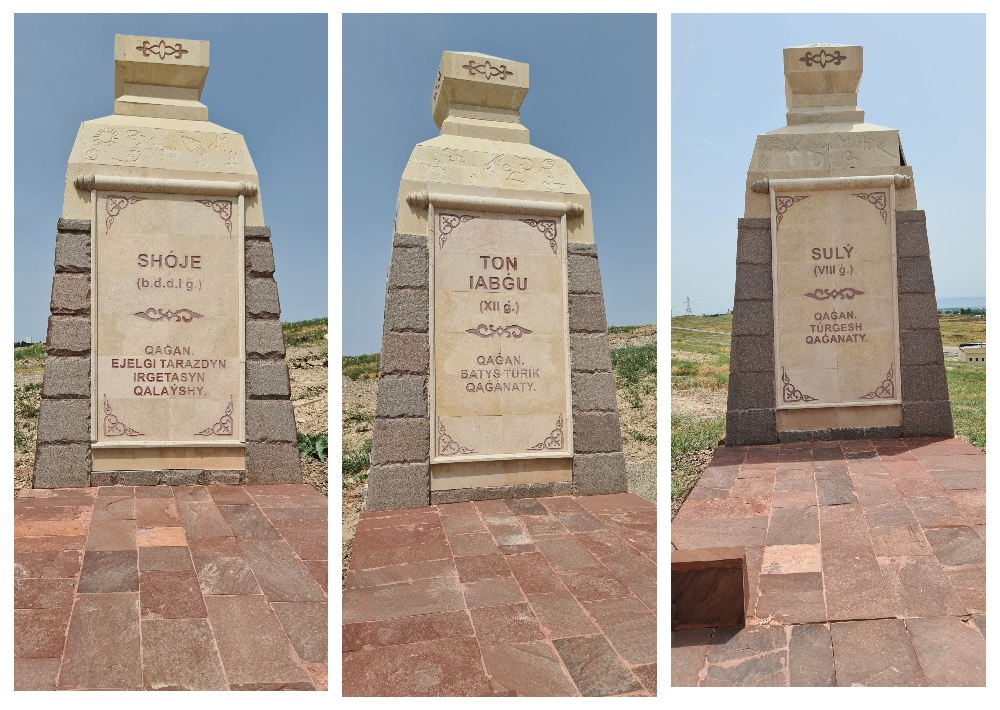
Shah Mansur (XI century) – kagan of the Karakhanid state. Shah Mansur ruled the Karakhanid dynasty. Arslan Ilig Mansur khan or Shah Mansur was just there, ruled over Taraz, Balasagun, Shash, Fergana, Uzgent, Khujand and Bukhara. His right to the throne was supported by the younger brothers Togan Khan Ahmed and Muhammad bin Ali, who did not even interfere with his accession to the throne.
It is known that during the years of its reign the Karakhanid state reached its greatest prosperity, and Shah Mansur left the post of ruler himself, passing it on to his heirs. He preferred a religious activity to the board. There is also an opinion that after his reign and resignation, Shah Mansur went to wander.
Satuk Bogra (10th century). He is the ruler of Kashgar is from the Karakhan clan.
In the historical literature, there is an opinion that he was the first of the Turkic rulers who converted the Islam. Extensive information about his biography, contained in later copies from the lost manuscripts. According to this information, he was the son of the Kagan Bazyr Arslan Khan, who led the struggle of the part of the Karluk tribes with the Samanid state. After the death of his father, he was supposed to live at the court of his uncle in Kashgar. An enmity between the Samanids and nomads of the Semirechye has been ceased temporarily. Before his death, he managed to unite the scattered estates and tribes of the disintegrated Karluk Kaganate, laying the foundation for the enlightenment of the Turks.
Tekturmas (XI century) – religious figure, sage. According to the philologist J. Dadebaev, Tekturmas at birth was named Sultan Mahmut at birth. However, after he resigned from the post of bek in the khan's palace, he was called Tekturmas.
He began to study religion and began to be called “Awliye” soon. The eyewitnesses of his holiness came to him in the mausoleum, slaughtered a ram, asked for the welfare. There is a legend in accordance to which, he worked as a military leader of the Karakhanids, traveled to crowded places and checked the travelers personally. If suspicious persons were found, he punished them, for which he received his name during these years.
There are several versions of how Tekturmas got his name. There are legends that during the years of his life he taught people to read and write. Among his students, he preached Islam and taught the basics of Islam to children. His name has become recognizable due to the quackery. It is known that he healed sick people, even from such severe cases as lung disease and leprosy.
One of the legends about him tells the story of a mother and child. So, according to the legend, one young girl, who had been married for about seven years, could not conceive in any way. She visited various bucks many times, took medications known at that time, but she still could not get pregnant. However, on the 7th day of the 7th month of the 7th year of marriage, she managed to become pregnant. However, instead of nine months, the girl carried the child for seven months. That is why, in accordance with the tradition, the child, born prematurely, grew and developed into a kesekap (“Keseqap”, literally translates as “Leather, felt bag for a bowl”). A mother managed to carry the child, but when he was one-year-old, the mother became a widow. The death of the breadwinner was followed by the poverty and death of livestock.
On one of these hungry days, the mother left the seven-year-old boy at home and went to search for a milk. In this search, she reached Tekturmas's dwelling. As soon as she saw awliye, recognized him, she turned her hands to the sky and prayed there. Lowering her arms, she saw a lone cow grazing nearby. The cow herself approached the mother, and the latter milked her and went home. Leaving the milk at home, the mother went to search the bread. A snake crawled into the house wh ere her non-walking son lived. She drank the milk seven times from the bucket brought by her mother, and crawling away dropped the seven drops of milk. From the places wh ere the drops fell, the ears began to grow. The search for the mother was unsuccessful, she returned home and, seeing the ears, was very happy. She baked seven loaves of these seven ears. Having tasted this bread, the child, who had not taken a single step by the age of seven, got to his feet. He was not completely healed soon.
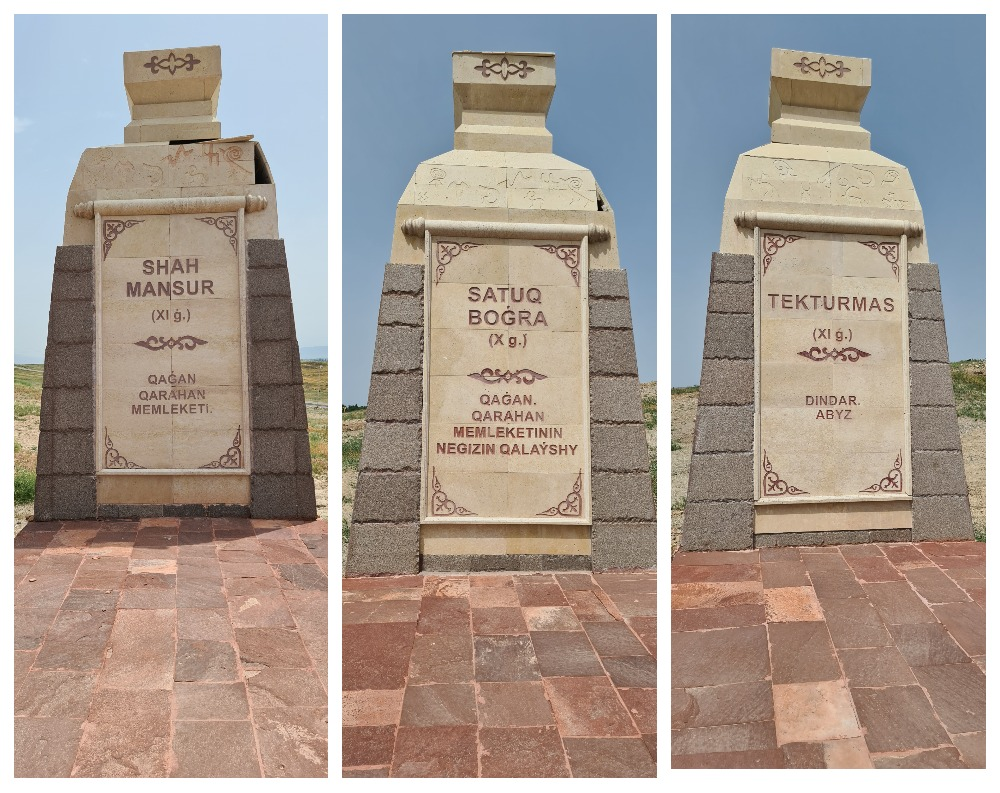
Yusuf Balasaguni (XI century). He is one of the great figures of the Turkic world, who has an important place in the history of world culture, whose creations are marked by words that guide the human to the happiness and prosperity, who made an important contribution to the development of the Turkish language.
Unfortunately, there is less information about his life and biography. He is believed to have been born in about 1018 at the town of Balasagun. Most probably, he came from a respectable family in Turkestan. Because his worldview shows that he was well-educated as a child. At that time, neither of them he had such an opportunity. He is known for his knowledge and respect for others.
Besides this, he tried to get all the knowledge he could in his time. His contemporaries read the works of Farabi and got acquainted with his views. In his works, knowledge is reflected in the meaning of life and as a measure of the cultural and spiritual level of society.
According to the thinker, knowledge and wisdom are necessary in order to prevent the evils that occur in life of the human and society. Knowledge is a bright way to discover one's identity, to develop one's faith, to find one's place in life and to be kind. A great thinker, who left a valuable legacy, died in 1077 in Kashgar city.
Dauytbek Dauber (XIII century). A great ruler, noble commander, scientist. In Taraz city, there is a mausoleum of historical significance Karakhan Baba – Shah Mansur, that people call the mausoleum of Dauytbek. On the walls of this mausoleum, there are written words that domestic scientists have translated into the Kazakh language as follows: “It is a ruler, noble commander, scholar, and just, a generous, sword and penman, a source of generosity and nobility, a glorifier of truth, a helper of people, a feeder of scholars, a source of strength to the weak, a glorifier of truth and religion, a stronghold of Islam and Muslims”. Kutlyg-Tonga Ulyg-Bilge Ilikhan Dadbek Isfehsalar b. Ilyas ... Ugul bek ash-Shahid belongs to Dadbek at-Tarazi. “Take note! Indeed, the friends of Allah are in no danger, nor will they grieve” (Qur'an, 10:62). He died on Friday evening, 660 (March 31, 1262).
From the above, it follows that the mausoleum was built in honor of Kutly-Tong Uly-Bilge Ilig khan Dadbek Isfekhsalar Ilyas Ugyl bey ash-Shahid Dadbek at-Tarazi, who died in 1262. Kutly-Tonga Uly-Bilge is his position here, ash-Shahid is his status in the clergy, Tarazi is his surname, his name is Dadbek Isfekhsalar Ilyas. Bartold read this inscription as follows: “Balik-Bulga Ulyk-Bilge Ikbalkhan Dauitbek Isfekhsalar b.Ilyas-Ugylbek Shahanshah”.
Mahmud Kashgari (XI century) – a Turkic scientist, the compiler of the famous encyclopedia “Diuani lugat at-Türk”. Mahmud Kashgari received a good education. He studied at the Sajia Madrasah in Kashgar. In 1056, Mahmud's grandfather, who decided to transfer the power to his son Hussein, the emir of the city of Barskhan, the father of Mahmud Kashgar after 15 months, came to power in Kashgar. As a result of the palace conspiracy, Kashgari's grandfather and father were poisoned someday soon. In 1057, Kashgari fled from Kashgar to the west part, to Maverannahr, and from there he went to Baghdad, wh ere the Seljuk Turks ruled. At the same time, Mahmud had traveled for a long time through the lands inhabited by Turkic tribes.
His famous book “Divani lugat at-Turk” is an encyclopedia that collects and summarizes an extensive historical, cultural, ethnographic and linguistic material. It is actually a monument of Turkic culture, perpetuating ethical values and norms of behavior, the specific worldview of the Turkic peoples in the 11th century.
Kaidu (XIII century) – khan, organizer of the quriltai in Talas. Kaidu was the great-grandson of Genghis Khan and the ruler of the Chagatai ulu. He was “The last paladin of the Mongol military glory”, who believed that power in the Mongol ulus should belong to the Ugedeids, fought against the khans from the Tolui house, who took the title of emperors of Yuan. Initially having few resources, Kaidu created an army for himself, the courage and military dignity of which became proverbial among the Mongols, and also has become the founder of an empire that stretched throughout Central Asia.
During the executions of the Ogedeids that followed Mongke's accession to the throne, Kaidu was exiled to Tarbagatai. When opposing Kubilai, Arik-Bugi took the side of the latter, hoping that the descendants of Tolui would lead their clan to the destruction in strife. When Arik-Buga enslaved to Kubilai, Kaidu did not follow his example and defended his rights to the khan's power.
Unable to resort to the troops of his ulus, Kaidu began to fight with small forces. He annexed the Bekrin tribe, took advantage of the war between Chagataid Algu and Berke. With the help of the Jochids, Kaidu captured the Emil Valley, Tarbagatai and the swimming pool of Black Irtysh, restoring part of the Ogedei ulus. Algu sent one of his emirs against Kaidu, who was defeated and killed as well. Then, Algu sent one of the princes with a large army, who managed to defeat Kaidu. The death of Algu helped him to establish himself in the occupied territory.
Taking advantage of the fact that the new ruler of the Chagatai ulus, Borak was engaged in the fight against Khubilai, Kaidu subdued all the regions up to Talas. Fearing Kaidu's attack on Maverannahr, Borak opposed him. In the first battle on the banks of the Syr Darya, Borak won, and only then, with the help of Mengu-Timur, who sent him 50,000 men, the advantage went over to the side of Kaidu. During these preparations for the war, Borak received unexpected news of his victor's goodwill. Kaidu sent his cousin Kipchak to him with an offer of peace and union. Borak received Kipchak solemnly in Samarkand.
The quriltai was convened in the spring of 1269. It happened in the Talas Valley. The princes feasted for seven days; on the eighth day, meetings began under the leadership of Kaidu, who addressed the rest of the princes with a speech about peace. Borak demanded that a yurt be assigned to him, which could feed his army. He was given two-thirds of Maverannahr.
The czarevitches decided to live in the mountains and steppes, not to approach the cities, not to let their herds out to an arable land, not to take only legal taxes from the inhabitants. Each of the princes had to be content with those thousands workshops in Bukhara and Samarkand that were assigned to him. The czarevitches called each other brothers-in-arms, exchanged clothes and cups, and by this, they swore unwavering fidelity. The sources do not mention the proclamation of Kaidu as the head of the clan, about the performance of the rite of ascension over him on white felt, that is considered as the election of the khan. Nevertheless, it is clear that the leadership in the political organization was established by the quriltai belonged to Kaidu.
Zahir ad-Din Babur (XV-XVI centuries). He is the founder of the state of Mogulistan. Zahir ad-Din Muhammad Babur was the Central Asian commander, poet and statesman, padishah of India and Afghanistan, founder of the Baburid dynasty and Empire. He was also known as the founder of the Mughal Empire. This name, in relation to the Baburids, had been used by European travelers since the 17th century.
Having lost his father early, who died by an absurd accident, 12-year-old Babur fought for the power in his inheritance at the difficult situation. He had the idea to recreate the former Timurid empire with its capital in Samarkand, wh ere his cousin Baisunkar Mirza ruled. Babur characterized the influence of some members of the nobility on Baisunkar: “They say that the shiite, Sayyid Mahmud, was his mentor, so Baisunkar Mirza was also reproached there [for the heresy]. Later, it was said that he renounced these bad beliefs and became a pure faith in Samarkand”. In 1497, Babur took Samarkand after a seven-month siege and Baisunkar Mirza was forced to flee to Gissar.
Later, in the struggle for the power in Maverannahr, Babur came across the experienced commander Sheibani Khan, who was already 50 years old at that time. A civil strife among the Timurids led to the defeat of Babur.
In 1504, Babur was ousted by Sheibani Khan into the Kabul possession of the Timurids. This property was ruled from 1469 to 1501 by his uncle, his father's brother Ulugbek Kabuli, and then, his son Abdurazzak ruled the state. Abdurazzak was overthrown by the member of the nobility Mukimbek. In 1504, Babur defeated Mukimbek and became the ruler of the Kabul region himself. His cousin Abdurazzak became his commandant. In 1508, the nobility tried to bring Abdurazzak to the power again, but the conspiracy was discovered.
Since 1519, Babur made the campaigns from Kabul to the Northwestern India. In 1525, Babur called for the help from Allam Khan, a rival of the Delhi Sultan Ibrahim Shah Lodi, and in 1526, Babur, equipping an army, embarked on the campaign against Delhi. Babur won a victory at the battle with Ibrahim Shah Lodi in Panipat, in April 1526. Then, Babur defeated the Rajput prince Sangram Singh at Khanua in 1527.
In his battles for India, Babur attracted Uzbek commanders from Maverannahr and an artilleryman of the Ottoman Empire, a Turk Ustad Rumi, and the Turkish military instructor Mustafa, and used firearms – cannons and rifles successfully. From Sheibani Khan, he borrowed some military tactics, such as the technique, called “Tulgam”. Having achieved the success, he transferred the center of the newly formed power to Agru.
Babur founded a new state, that became the basis of the powerful empire, that the Europeans called the empire of the Great Mughals, and the Russian orientalists called the empire of the Baburids.

